프랑스 대통령이 고종에게 선물한 도자기 첫 공개(종합) | 연합뉴스
프랑스 대통령이 고종에게 선물한 도자기 첫 공개(종합), 임동근기자, 문화뉴스 (송고시간 2020-07-28 14:07)
www.yna.co.kr
New Era of The Royal Ceramics Embracing the Western-Style Porcelain in the Joseon Royal Court
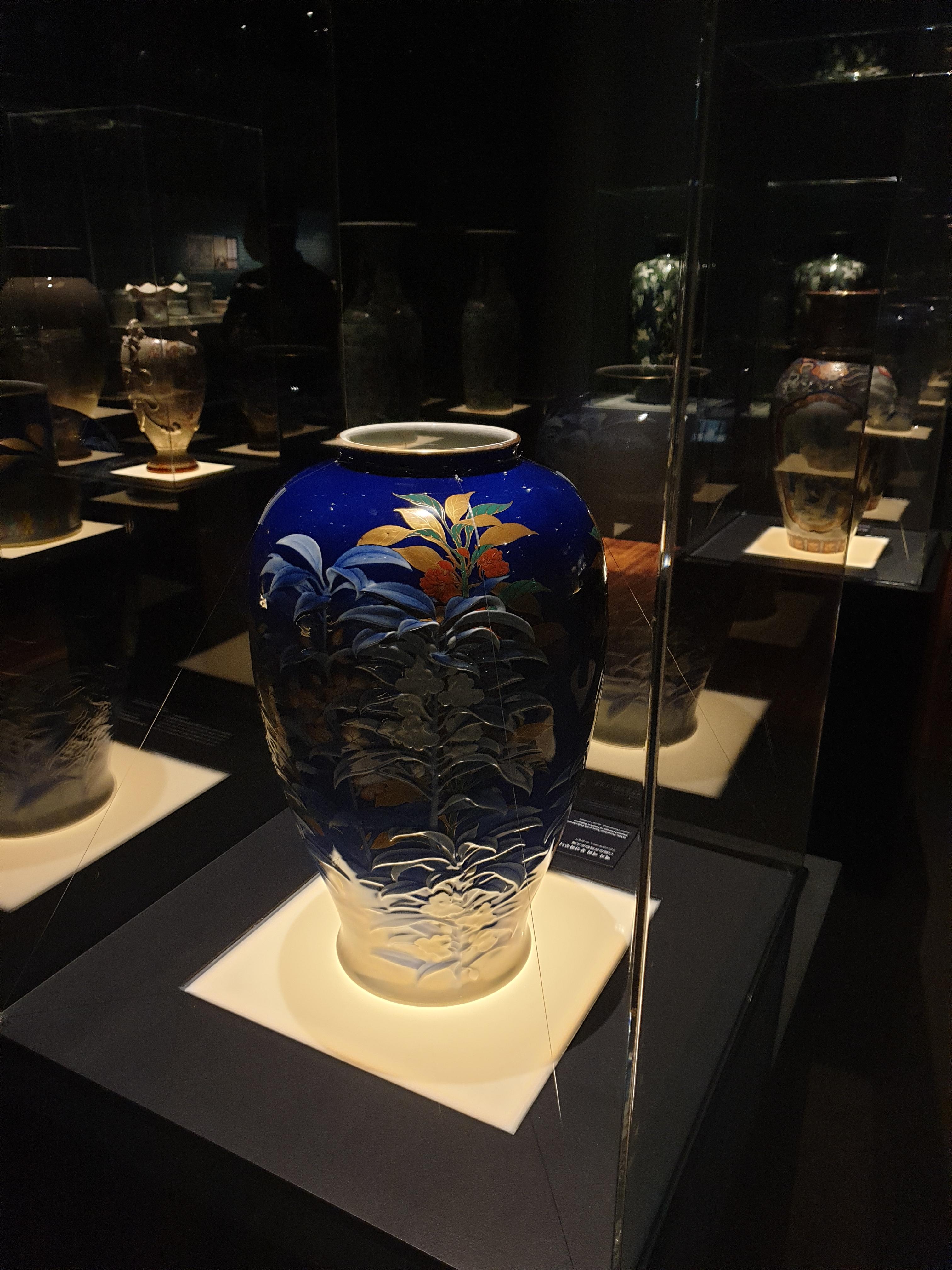

The National Palace Museum of Korea (Director Kim, Dong-young) is just a few steps away from the subway line 3, Gyeongbokgung Palace station. The Museum, closed since May as part of a government measure to prevent further spread of the Corona virus, has recently renewed.

The first exhibition to greet the museum goers is a special exhibition titled “New Era of The Royal Ceramics - Embracing the Western-Style Porcelain in the Joseon Royal Court“ held from July 29 to October 4, 2020.
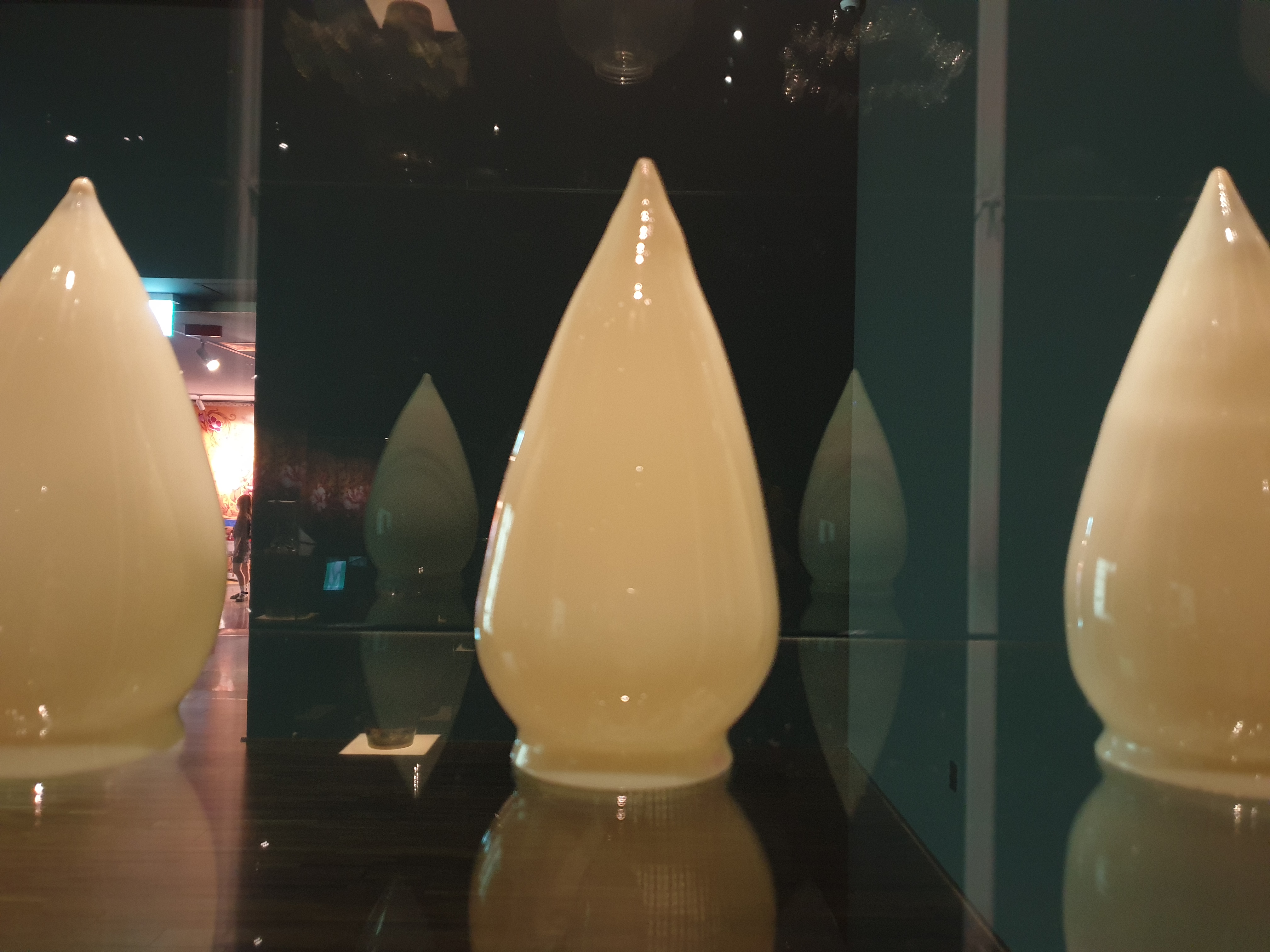
The National Palace Museum of Korea specializes in archiving, research and exhibitions of heritage artifacts from the Joseon Royal Court (1392 – 1910). Little known fact; the Museum has the largest collection of modern era Western-style porcelain ware in Korea.

Porcelain wares are practical objects, displaying diverse function and form depending on who their users are, and therefore can serve as excellent indicators that help us glimpse into the times they had been in use. Joseon was forced to www up its ports to the outside world under Japanese pressures in 1876.

However, Joseon consciously made efforts to modernize itself as an independent modern state. The special exhibition looks into the stories these porcelain wares tell about the Joseon Royal Court and its efforts in the modernization process.


A total of 400 pieces, 310 cases of relics, including not only Korean traditional porcelain ware of Korea, but also western-style porcelain ware from France, U.K., Germany, Japan and China, will be put on display under five different sections at the exhibition.
The exhibition has five sub themes. The first segment “Ceramic Consumption of the Joseon Royal Court” introduces porcelain ware master pieces in underglaze cobalt-blue from the Joseon Royal Courts, including the Yongjun, ceremonial jars with dragon designs and white porcelain wares with peony design in underglaze cobalt-blue, that was used for carrying alcoholic drinks or as flower vases, as well as other master pieces excavated from the initial burial site of King Jeongjo (r. 1776-1800).
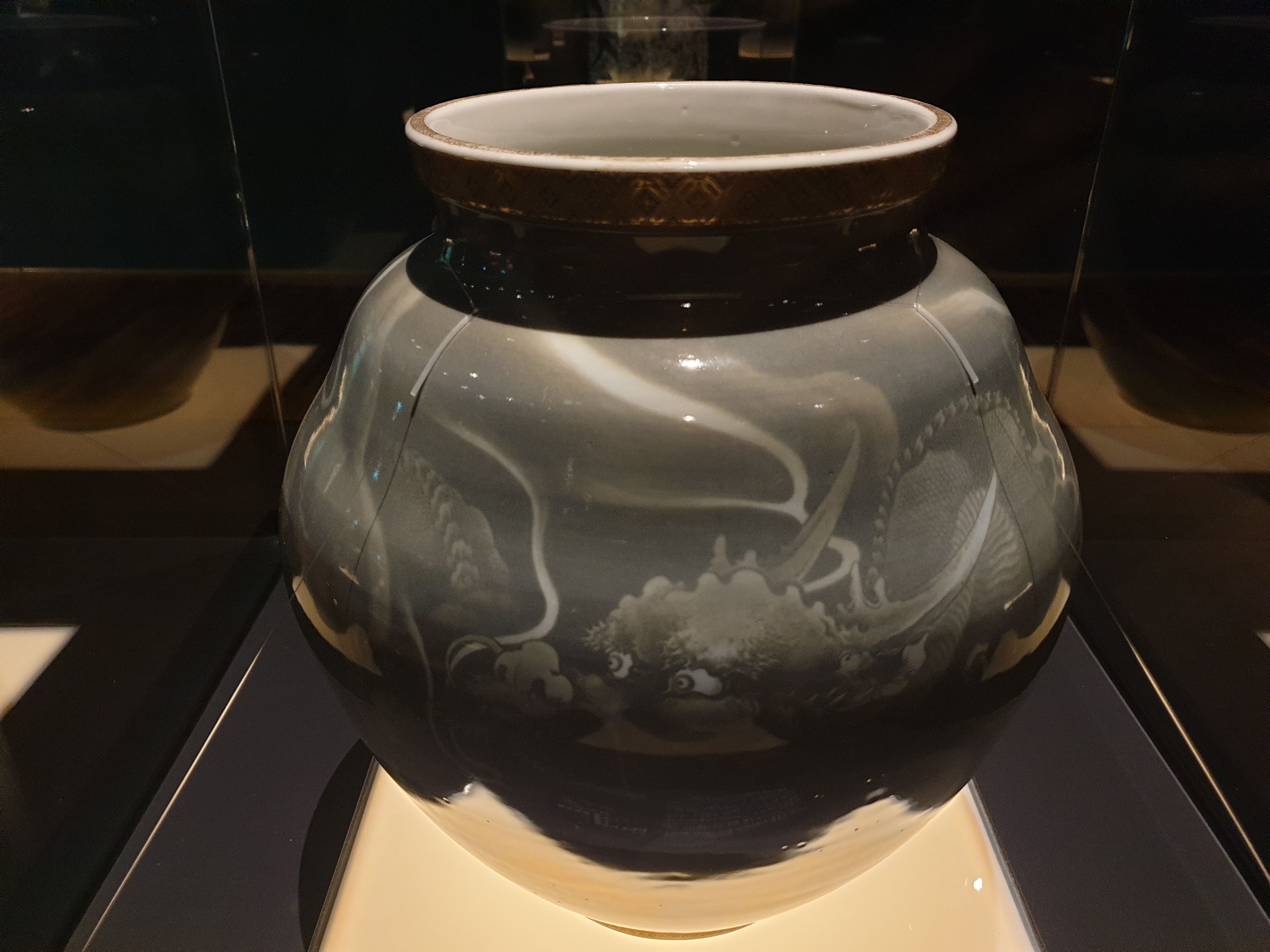

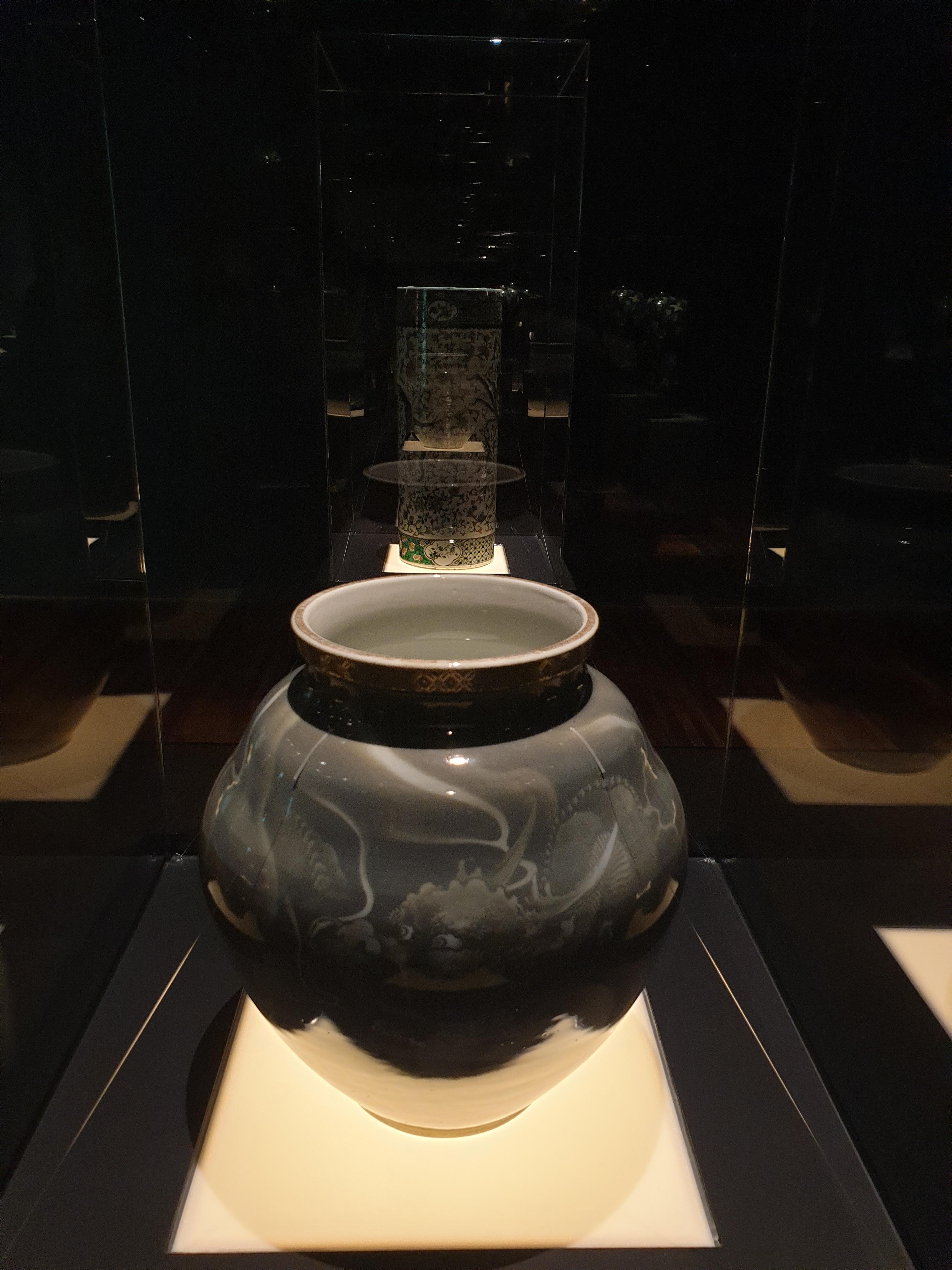

This segment will introduce the visitors to over five centuries of porcelain ware use within the Joseon Royal Court, before moving on to viewing the Royal Court’s Western-style porcelain ware.
The second section of the exhibition, “Background of the Embrace of Imported Ceramics by the Royal Court”, tells the story of changes within and outside Joseon Dynasty at a time when Western-style porcelain ware was introduced to the court.

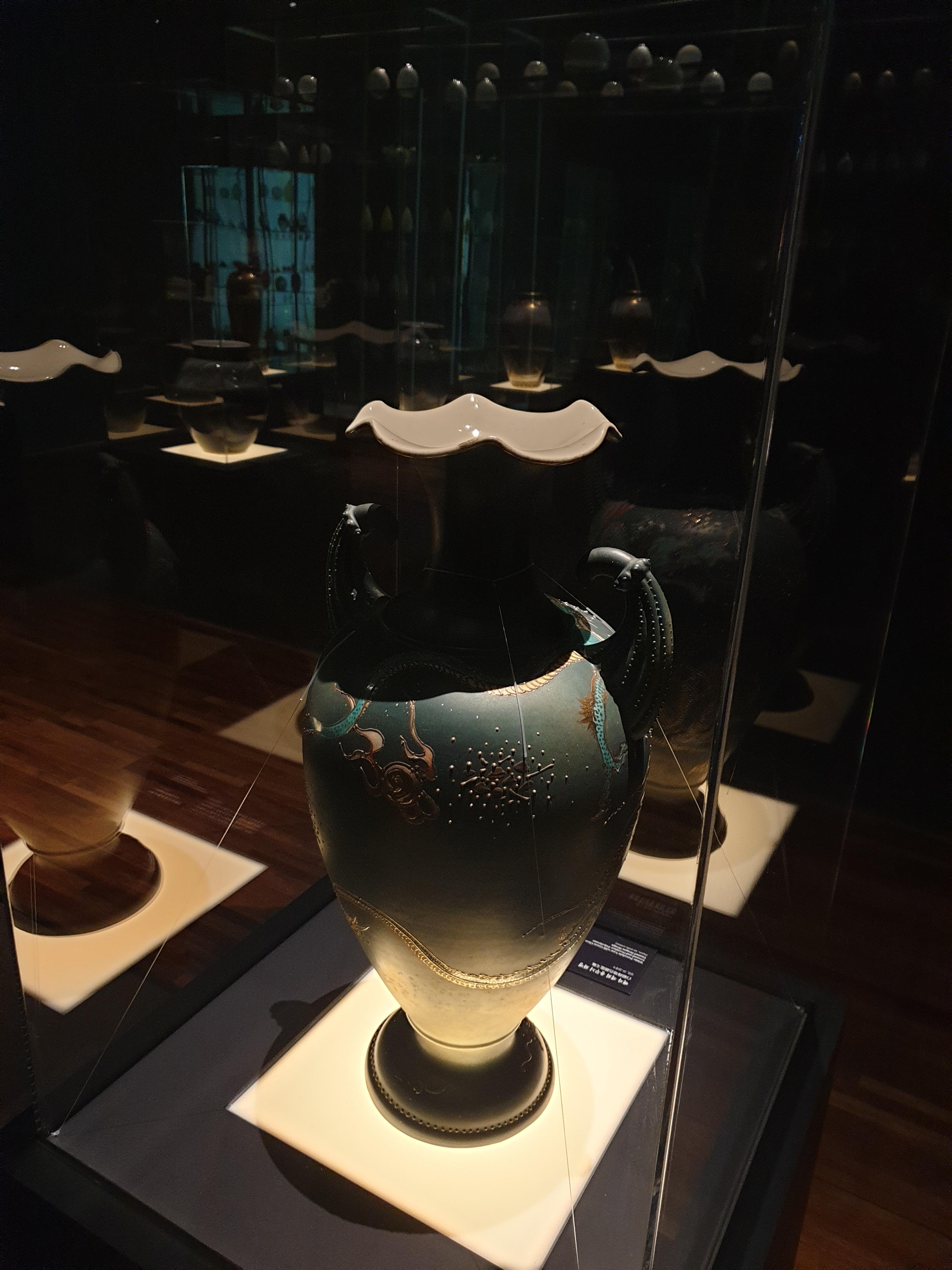
Following the signing of the Treaty of Ganghwa Island in 1876, Joseon starts to actively embrace western culture, in an effort to become a modern state.
This part of the exhibition displays over 150 pieces of glass lanterns, including the glass lanterns with plum blossom seal in gold, that had decorated both the indoors and outdoors of the Royal Court, following the introduction of electricity in 1887.


The colorful glass lanterns symbolize how Joseon has stepped into the age of light of modern times.
The visitors will walk through a door decorated with glass lanterns to enter the exhibition hall and enjoy the Western-style porcelain of the Royal Court.

The third segment of the exhibition is titled “Ceramic Gifts Exchanged between Joseon and France”.
In this section, the visitors will have the rare opportunity to be among the first to see the White Porcelain “Salamis” Vase with Polychrome Decoration, which was produced by the Manufacture Nationale de Sèvres and presented as a gift by President Marie François Sadi Carnot (in office from 1887 to 1894) to commemorate the signing of the The Korea-France Treaty of 1886.
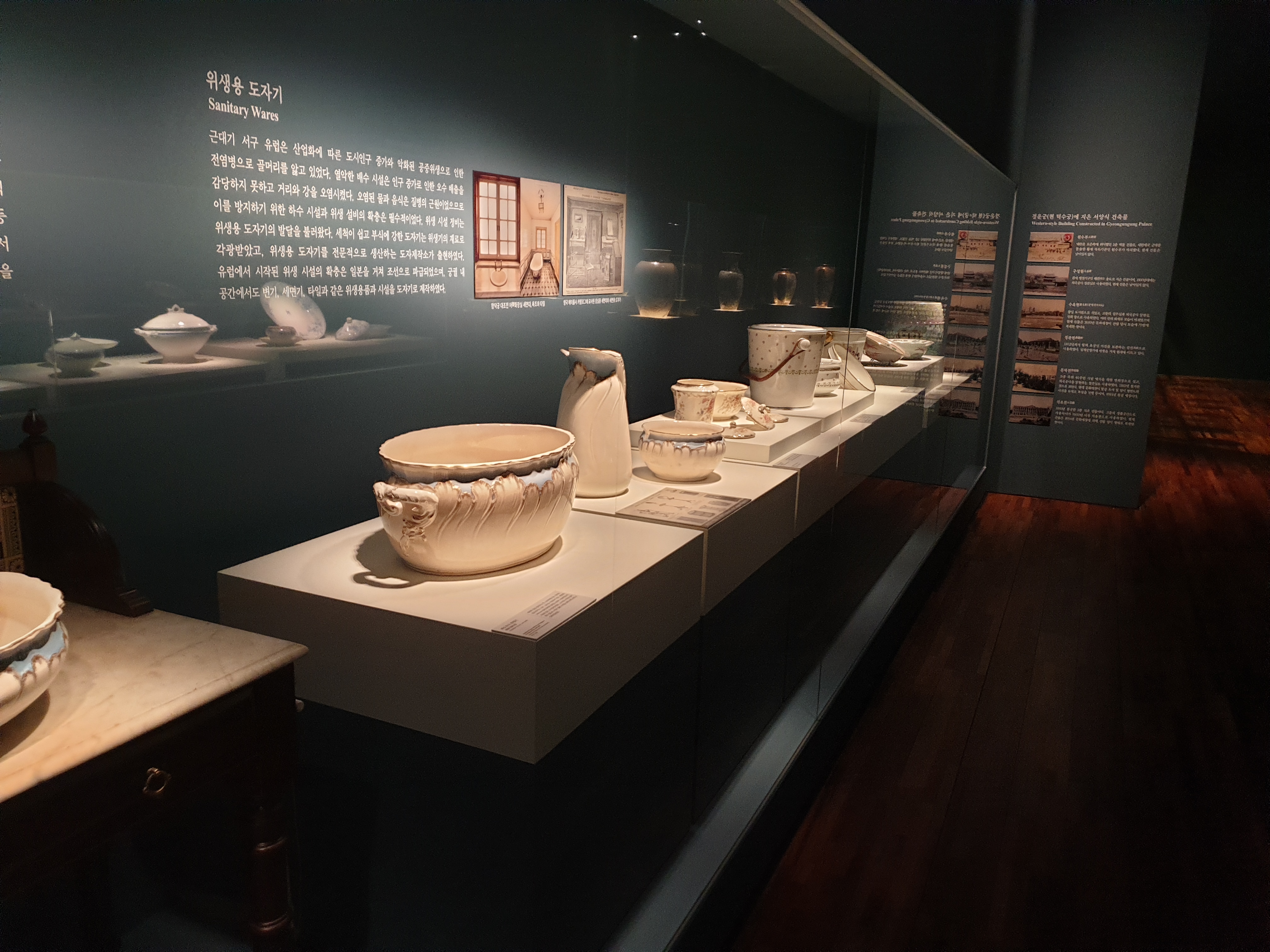

This was the very first time for Joseon to exchange diplomatic gifts of ceramics with the west. France, with its high artistic pride, has sent over porcelain ware made in Sèvres.
In return, King Gojong gave two pieces of 12-13th century celadon and a pair of "flower tree on the pot".
The forth segment of the exhibition is titled “Western-style Banquets and Tableware”.
The visitors can experience first-hand the royal banquets at the Joseon Royal Court. After Joseon wwwed its ports, the Joseon Royal Court would host Western-style banquets and invite the foreign diplomatic corp in an effort to gather information on international affairs.




A Western-style kitchen that remains in the Changdeokgungpalace Daejojeonsite has been fully replicated for the exhibition, displaying cake moulds and Samovars, along with other relics that had been used for cooking in the Royal kitchen.
The visitors will enjoy a unique experience of walking into a reconstructed royal kitchen of Changdeokgung.
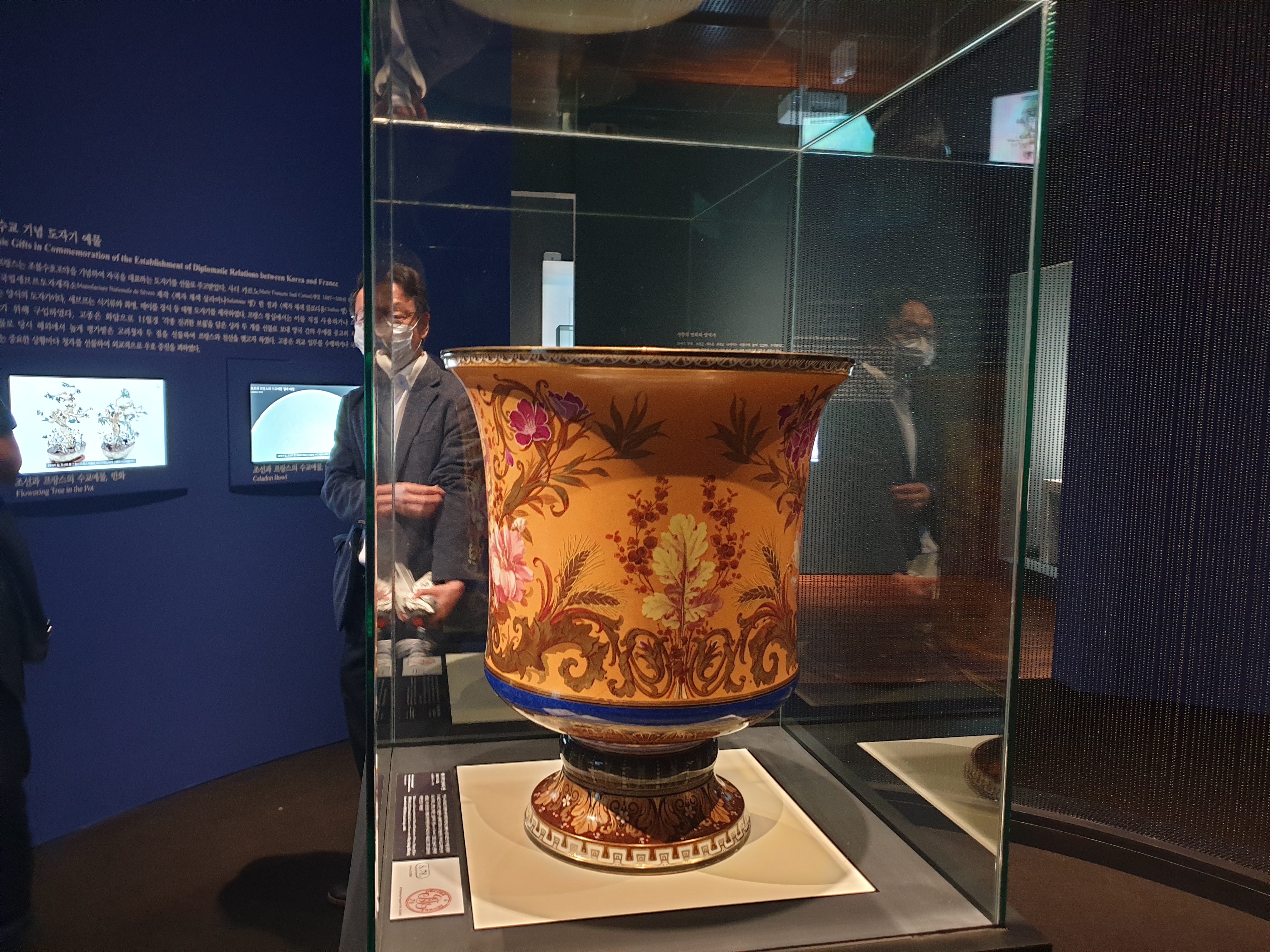
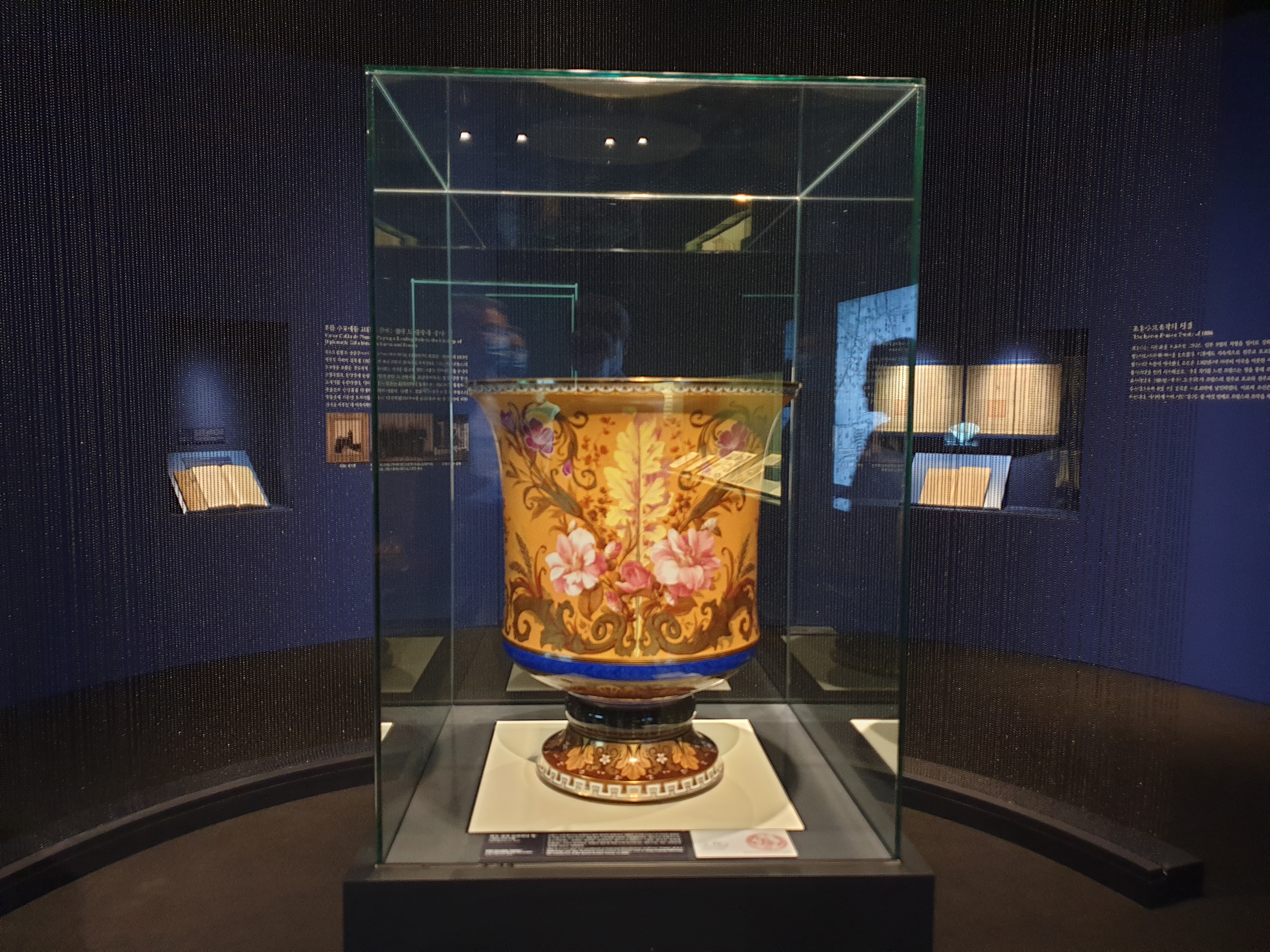
Western-style dinnerware, order-made by the French company Pillivuyt, is decorated with the coat of arms of the Joeson Royal Court.
A video, showing a traditional 12-course french cuisine, complete with Foie-gras pate, tenderloin steak with truffle, pheasant breast grape dish, etc., transports the visitors right into the banquet site of the past.
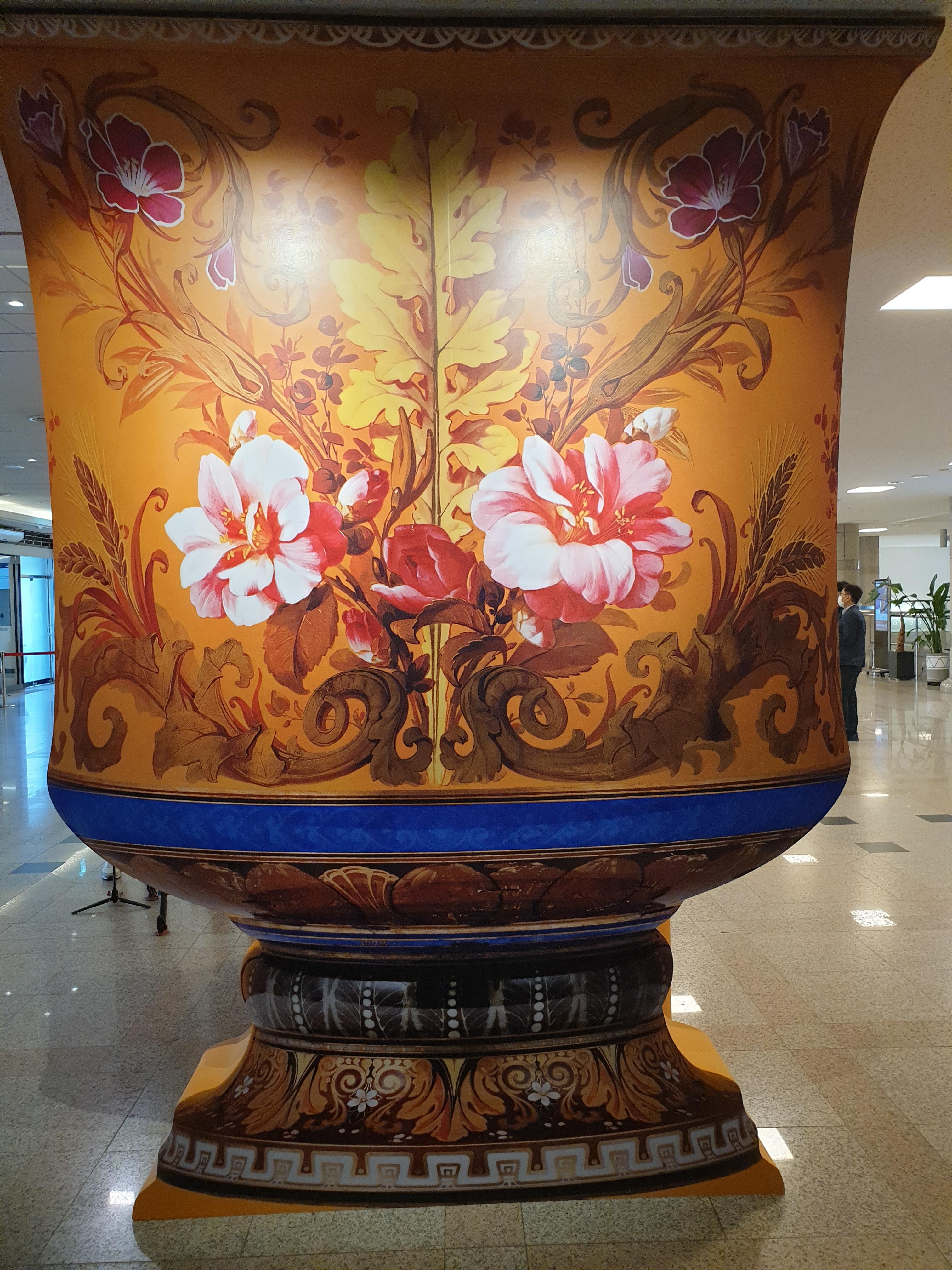
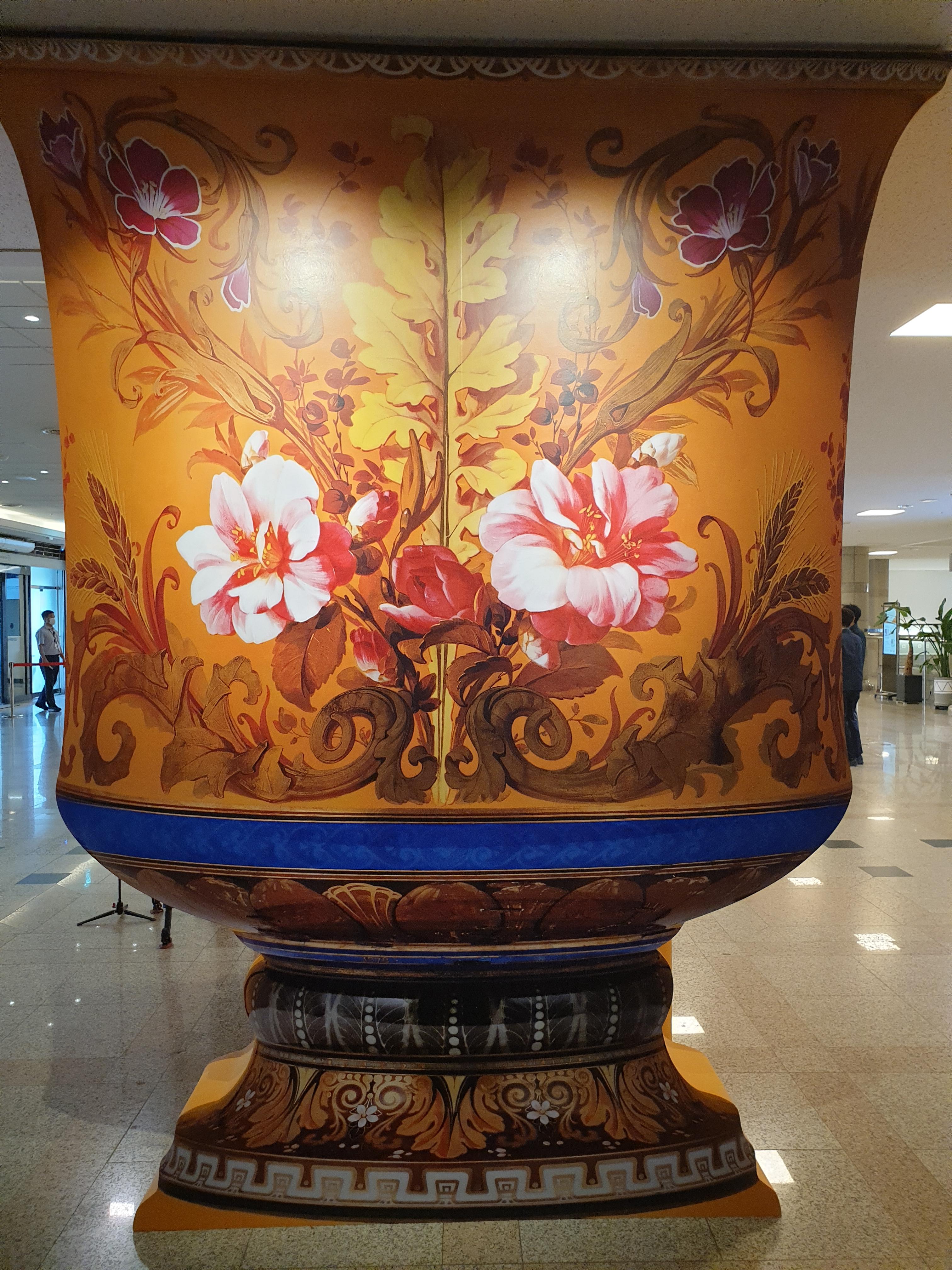
The fifth section, “Imported Vases That Adorned the Royal Court”, displays Japonisme flower vases and Chinese Peranakan enamel vases, which have become the mainstream porcelain ware after the first World Expo. Construction of western-style buildings and decorating them with large flower vases that were in fashion at the time indicates efforts made by the Joseon Dynasty to learn and adopt modern taste and culture.
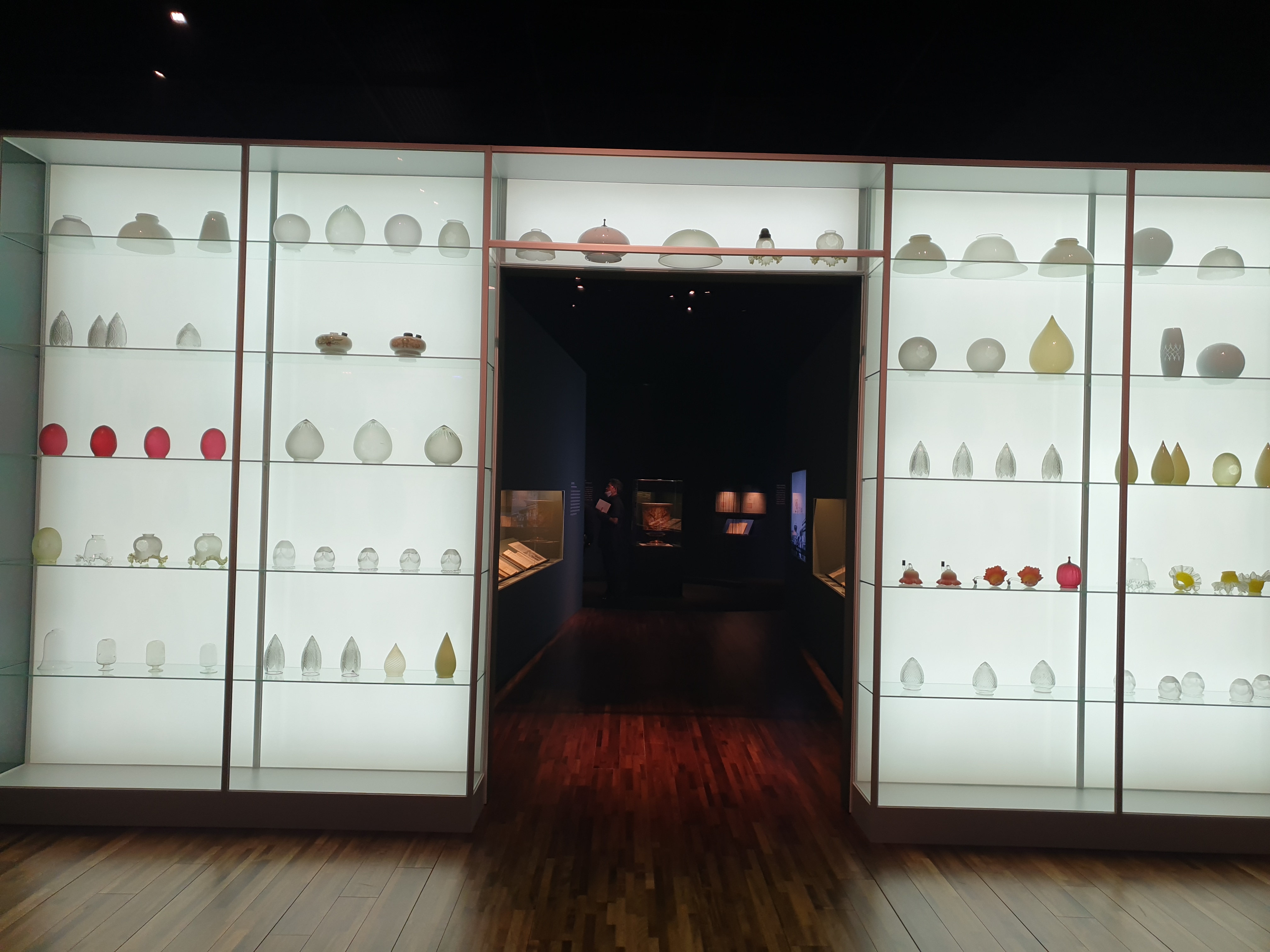

At the time, Japanese produced flower vases in Arita, Kyoto and Nagoya and exported them overseas.
This exhibition is the first to exhibit these Japanese exported flower vases in large quantities that have been used in Korea. These flower vases have been produced by companies such as Koransha and Kinkozan in their own factories and are decorated with birds, flowers, dragons and characters from ancient folklore stories.

Under the Corona pandemic situation, many people cannot come to the museum to enjoy the exhibition in person.
To accommodate this situation, the exhibition will also www online at Daum gallery with images and explanations provided for the key relics. Also, every Thursday, a weekly upload of online contents, where the curator of the exhibition will share interesting behind-the-stage stories of the exhibition, will be presented through the National Palace Museum and the Cultural Heritage Administration’s Youtube channel.
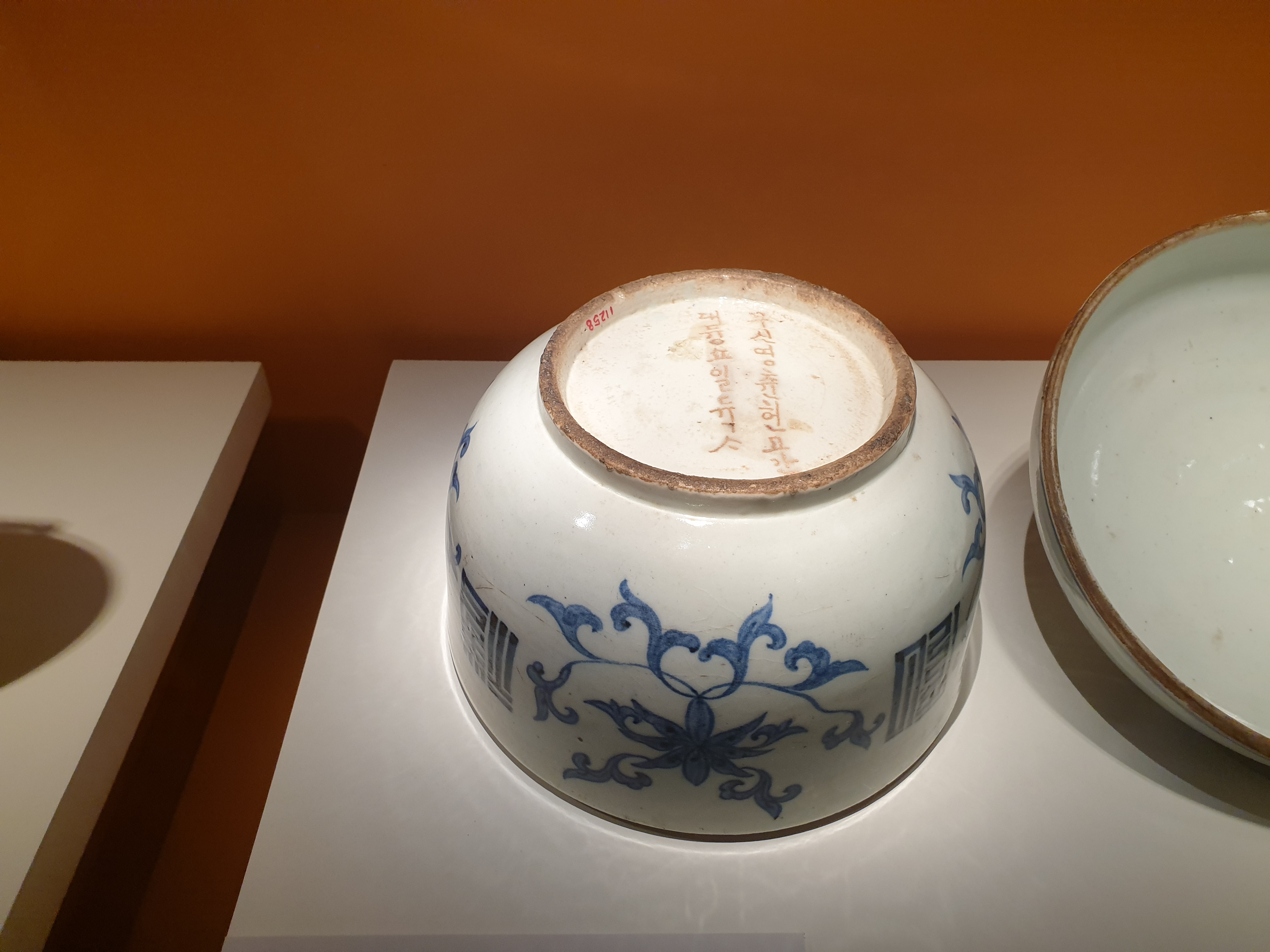

And lastly, a 3D image of the exhibition hall and a 360 degree VR contents will be wwwed to the public on September 1st.
We sincerely hope that these measures will help more people enjoy the exhibition online.


「新신왕실도자, 조선왕실에서 사용한 서양식 도자기」 특별전 개최
- 조선과 프랑스 수교기념‘살라미나 병’등 최초 공개 / 7.29.~10.4. 국립고궁박물관 -
문화재청 국립고궁박물관(관장 김동영)은 오는 7월 29일부터 10월 4일까지 개항 전후 조선왕실의 도자기 변화를 한 곳에서 볼 수 있는 특별전, 「新신왕실도자, 조선왕실에서 사용한 서양식 도자기」를 개최한다.
이번 전시에서는 조선과 프랑스 수교(1886)를 기념하여 프랑스 사디 카르노 대통령이 고종에게 보낸 ‘살라미나 병’과 필리뷔트(Pillivuyt) 양식기 한 벌, ‘백자 색회 고사인물무늬 화병’ 등 그동안 한번도 공개된 적 없는 근대 서양식 도자기 40여 점이 처음으로 전시되며, 이를 포함해 프랑스·영국·독일·일본·중국에서 만들어진 서양식 도자기 등 약 310건 400점의 소장 유물이 한자리에서 선보인다.

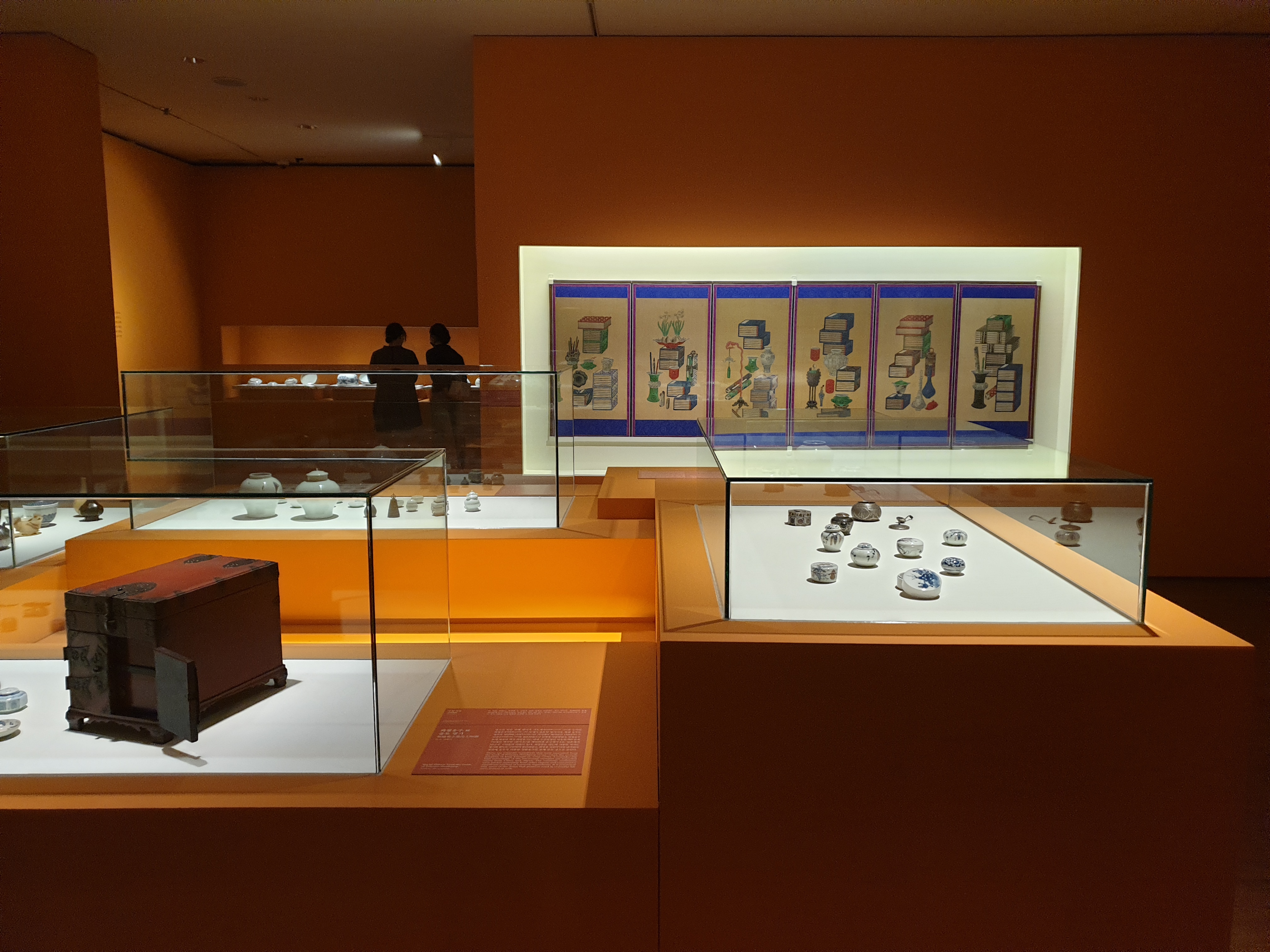
도자기는 사용하는 시대와 사람에 따라 기능과 형식이 크게 달라지는 실용기로, 당대 사회를 구체적으로 들여다보는 도구가 될 수 있다. 국립고궁박물관은 국내 최대 근대 도자기 소장 기관으로, 이번 특별전은 개항 이후 근대국가로 나아가고자 노력했던 조선의 생생한 이야기를 ‘왕실에서 사용한 서양식 도자기’를 통해 5부의 전시로 조명하고자 기획되었다.
□ 개항 전후 왕실 도자기 변화의 서막
▲ 1부 ‘조선후기 왕실의 도자 소비’에서는 용준(龍樽)과 모란무늬 청화백자, 정조초장지, 화협옹주묘 출토 명기 등 조선왕실 청화백자를 한곳에 모아 전시한다. 서양식 도자기를 본격적으로 감상하기에 앞서 500년간 이어진 왕실의 전통 도자기를 우선 감상하는 공간을 마련해 왕실 도자기의 소비 변화를 알아볼 수 있게 하는 취지다.
* 용준(龍樽): 용무늬가 그려져 있는 큰 백자 항아리, 각종 왕실행사에서 술단지나 꽃병으로 사용됨

▲ 2부 ‘新신왕실도자 수용 배경’에서는 개항 이후 서양식 도자기가 왕실에 유입되었던 배경을 조선의 대내외적 변화로 살펴본다. 조선은 1876년 강화도 조약 체결 이후 근대국가로 거듭나기 위해 서양문물을 적극적으로 수용하였다. <오얏꽃무늬 유리 전등갓> 등 이번 전시에 선보이는 150여 점의 유리 등갓은 1887년 전기 도입 후 궁중 실내외에 설치된 것이다.
관람객들은 근대기 빛(Light)의 시대로 진입했음을 암시하는 연출공간에서 가지각색의 유리 전등갓을 비교해보고 유리 등갓으로 만든 문을 통과해 본격적으로 서양식 도자기를 감상할 수 있다.

□ 조·불 수교 기념 프랑스 대통령 선물 ‘백자 채색 살라미나 병’ 최초 공개
▲ 3부 ‘조선과 프랑스의 도자기 예물’에서는 조·불수호조약(1886) 체결 기념으로 프랑스 사디 카르노(Marie François Sadi Carnot, 재임 1887-1894) 대통령이 조선에 선물한 프랑스 세브르 도자제작소(Manufacture Nationale de Sèvres)에서 만든 <백자 채색 살라미나Salamine 병>을 처음 선보인다.
개항 이후 조선은 수교를 맺은 서양 국가로부터 기념 선물을 받은 전례가 없었다. 예술적 자부심이 높은 프랑스는 자국을 대표하는 명품으로 세브르産(산) 도자기를 선택해서 보냈다. 고종은 답례로 12~13세기 고려청자 두 점과 ‘반화(盤花)’ 한 쌍을 선물하였다.
* 반화: 금속제 화분에 금칠한 나무를 세우고, 각종 보석으로 만든 꽃과 잎을 달아놓은 장식

▲ 4부 ‘서양식 연회와 양식기’에서는 조선왕실의 서양식 연회를 직접 체험해 볼 수 있다. 개항 이후 조선은 서양식 연회를 개최해 각국 외교관들과 교류하고 국제정보를 입수하고자 했다.
창덕궁 대조전 권역에 남아 있는 서양식 주방을 그대로 옮긴 구조에 <철제 제과틀>, <사모바르(Samovar)> 등 각종 조리용 유물을 전시해 당대의 창덕궁 주방 속으로 관람객을 안내하는 공간이다. 이화문(李花文)이 찍혀있는 프랑스 회사 필리뷔트(Pillivuyt) 양식기는 조선에서 주문 제작한 도자기다. 푸아그라 파테, 안심 송로버섯구이, 꿩가슴살 포도 요리 등 정통 프랑스식으로 이루어진 12가지의 서양식 정찬이 필리뷔트 양식기에 담기는 영상도 전시실에서 함께 어우러져 마치 연회 속에 직접 와 있는 느낌을 받을 수 있을 것이다.
* 사모바르: 장작, 석탄 등을 사용하여 물을 끓였던 러시아식 주전자


□ 다량의 일본 자포니즘 화병 국내외 처음 선보여
▲ 5부 ‘궁중을 장식한 수입 화병’에서는 만국박람회를 통해 세계 자기 문화의 주류로 떠오른 자포니즘(Japonism) 화병과 중국 페라나칸(Peranakan) 법랑 화병을 전시한다. 조선이 서양식 건축을 짓고 세계적으로 유행한 대형 화병을 장식한 것은 근대적 취향과 문물을 받아들이려는 노력의 하나였다. 일본 아리타·교토·나고야 지역에서 제작하여 세계적으로 유행한 서양 수출용 화병들이 국내에 이처럼 다량 현존하고 있는 사실은 국내외에 처음 공개되는 것이다.

고란샤(香蘭社)·긴코잔(錦光山)과 같은 공장제 도자기 제작회사에서 만들어진 이 화병들은 새와 꽃, 용, 고사인물 등 다양한 소재와 금채金彩로 화려하게 장식되어 풍부한 볼거리를 담고 있다.
* 자포니즘(Japonism): 19세기 중반 이후 서양에서 나타난 일본 문화 선호 현상
* 페라나칸(Peranakan): 19세기 후반부터 말레이 반도, 싱가포르 등지에 사는 중국 무역상의 후손
* 고사인물(高士人物): 주요 회화 소재 중 하나로 신화나 특정 주제에 얽힌 인물을 지칭
□ 3차원 오브젝트 기법 가상현실(VR) 최초 도입·‘살라미나 병’ 문화상품 제작
국립고궁박물관은 코로나19 등을 이유로 전시장을 직접 찾지 못하는 관람객을 위한 다양한 온라인 콘텐츠도 제공할 예정이다. 7월 29일부터 다음 갤러리(https://gallery.v.daum.net/p/premium/npmkspecial, 28일 오후 6시부터 접속 가능)에서 주요 전시 내용과 유물에 대한 상세한 설명을 담은 온라인 전시를 제공하며, 오는 9월 1일부터는 박물관에 직접 방문하지 않더라도 온라인을 통해 전시를 감상할 수 있도록 전시실의 가상현실(VR) 콘텐츠를 제작하여 국립고궁박물관 누리집(www.gogung.go.kr)에서 공개할 예정이다. 특별히 프랑스·중국·일본산 대형 화병 13점은 3차원 입체(3D)오브젝트 기술을 최초로 적용해 가상현실 온라인 전시관에서 360도로 감상할 수 있다.
* 3차원 입체(3D) 오브젝트 기술: 3차원 입체물 촬영 기법
8월 13일부터 매주 목요일에는 유물에 대한 상세정보와 설명, 전시 뒷이야기를 담은 영상을 국립고궁박물관 누리집과 국립고궁박물관 사회관계망서비스(SNS - 공식 인스타그램(instagram.com/gogungmuseum))에서 제공한다. 또한, ‘백자 채색 살라미나 병’을 그대로 살린 문화상품을 제작해 관심 있는 대중 누구나 기념품으로 전시의 여운을 간직할 수 있도록 하였다.
□ 전시와 연계된 강연회와 교육프로그램 운영
특별전 기간에는 두 차례의 특별강연을 진행한다. 8월 27일 오후 2시부터 5시까지 ▲ 모던의 소비와 한국 공예의 선택(최공호, 한국전통문화대학교), ▲ 왕실 수입자기의 종류와 특징(장남원, 이화여자대학교)을, 9월 24일 오후 2시부터 5시까지는 ▲ 조·불 수교기념 도자기 예물과 新신왕실도자의 의미(곽희원, 국립고궁박물관)와 ▲ 조선왕실과 프랑스자기의 조우(엄승희, 이화여자대학교) 특강을 열 예정이다. 국립고궁박물관 유튜브(https://youtube.com/gogungmuseum)에서 실시간으로 생중계할 계획이며, 조선왕실 서양식 도자기의 구체적인 쓰임에 대한 궁금증을 해소할 수 있을 것이다.
이 밖에도 전시 유물에 관한 이야기와 당시 시대 배경을 알기 쉽게 설명하고 퀴즈 등을 통해 학습하는 ‘新왕실도자 전시해설’과 ‘내가 만드는 왕실도자’ 등 특별전과 연계한 교육도 8월 중순 이후 시작할 예정이다. 교육 참여에 관한 자세한 사항은 박물관 누리집 또는 전화(☎02-3701-7652)로 문의하면 된다.


참고로, 코로나19 감염 예방을 위해 관람객 마스크 착용, 입장 전 발열 확인, 한 방향 관람과 안전거리 유지(2m) 등 안전수칙을 준수하여 전시를 운영할 계획이다.
문화재청 국립고궁박물관은 조선왕실 문화를 연구, 전시하는 전문 박물관으로서 2018년 ‘조선왕실 아기씨의 탄생’ 특별전 등을 비롯하여 조선왕실의 도자기를 조명하는 전시를 꾸준히 개최해 왔다. 이번 특별전은 우리의 과거와 현재를 돌아보고 복잡한 세계정세 속에서 이룩해야 할 자강(自强)의 의미를 모색해보는 계기가 되기를 기대한다. 아울러 코로나19로 인해 힘들고 지친 사람들에게 풍부한 볼거리를 제공하여 일상의 활력이 되길 바란다.
'NEWS & THESIS' 카테고리의 다른 글
| Underwater Excavation Begins in Jindo Island (0) | 2020.07.29 |
|---|---|
| 날로 먹던 경기도박물관장이.. (0) | 2020.07.28 |
| 탈북자에 코로나 책임을 거론한 김정은 (0) | 2020.07.26 |
| 섬마을 비름빡 뜯기 2차 부산물은 한시漢詩 (0) | 2020.07.24 |
| 연간 백억 가까이 땡겼다는 동네신문 NYT 사장 (1) | 2020.07.23 |




댓글